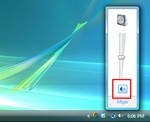Steps To Resolve The “Stop 0x00000024” Error
The “Stop 0x00000024” error normally appears because of a problem caused by the ntfs.sys file on your system. This file is continually being used by your computer to help it read various disk partitions on your PC, and it often causes this error if it is corrupted, damaged or unreadable. Fortunately, you can fix this error pretty easily by using certain steps to resolve the issue that causes it.
What Causes The 0x00000024 Errors?
The Stop 0x00000024 error will normally appear on a blue screen like this:
Stop 0x00000024
or
NTFS_FILE_SYSTEM
Both of these errors are telling the user that there is a problem with a file called ‘Ntfs.sys’ file. What this file is, is a driver file, which is needed to enable your system to read and also write to the drives that have the NTFS file system on them. The actual cause of the error is that the file cannot be located, is corrupt or damaged. In order to fix these error messages, there are certain steps that should be taken such as ensuring any SCSI drives are functioning correctly, the integrity of your hard drives are good and also that the registry is cleaned out. Here’s what you need to do:
How To Fix The 0x00000024 Errors
Step 1 – Ensure Any SCSI Drives Are Functioning Correctly
If your computer contains SCSI hard disks and other SCSI devices, then it is important that you check they are functioning properly. This can be done by checking the cables on the rear of the component to ensure there is no termination problems experienced between the SCSI devices and the SCSI controllers. It is strongly recommended that you check the system and application logs for error messages.
Step 2 – Check The Integrity Of Your Hard Drives
Having damaged hard drives is also a big problem for your computer, as these cause Windows to become extremely ineffective and unreliable. Hard drives can become damaged for a number of reasons, and you can fix them by using these steps below:
- Use Chkdsk
- Click Start, select Run.
- Type cmd into the box. The click OK.
- Then type chkdsk drive: /f then press Enter.
This will enable the command and will then detect any structural errors.
2. Using In-Built Windows Functions
- Open My Computer.
- Right click the hard drive that you want to check, then select Properties.
- On the Tools tab, click the check now button in the Error checking section.
- In the Check disk options dialog box, select the Scan for and attempt recovery of bad sectors.
- Or/and Automatically fix file system errors check boxes then click Start.
Step 3 – Clean Out The Registry
– Download this registry cleaner
The ‘registry’ is a central database which stores vital settings and information for your PC. It’s used continuously to help your PC run like it did when it was new, and is the main reason why Windows can recall various settings for your PC, ranging from the likes of your desktop theme to your most recent emails. Unfortunately, the registry is continually causing a lot of problems as it’s being saved in the wrong way, making it a recommended step to use a ‘registry cleaner’ to fix any issues that are inside it. You can see our recommended registry cleaner tool below:



